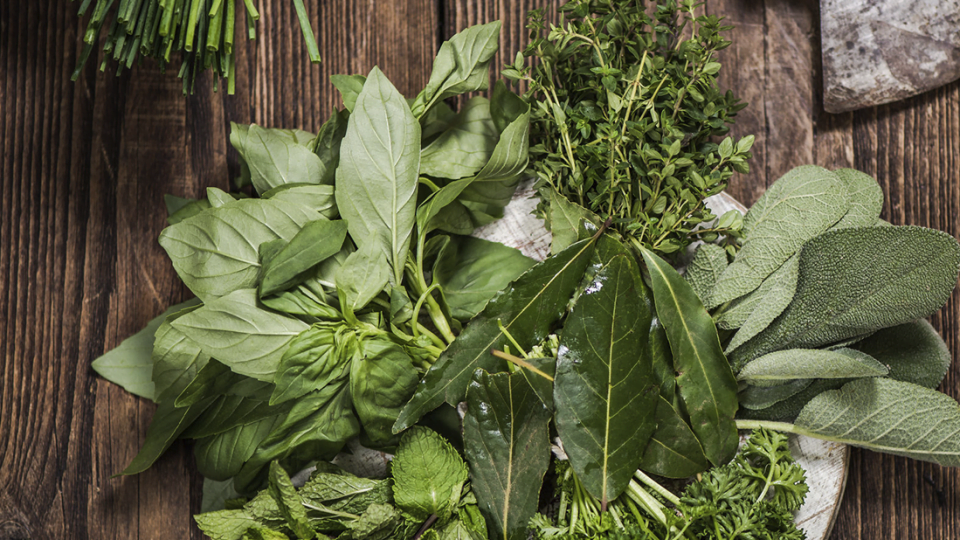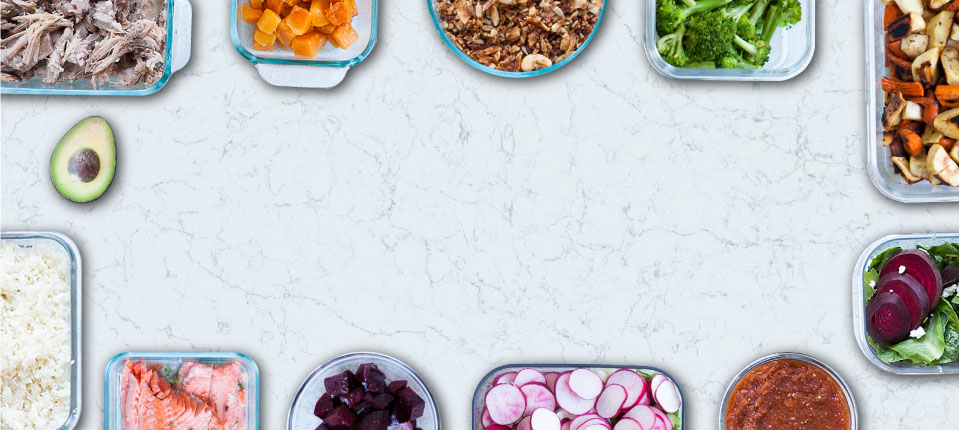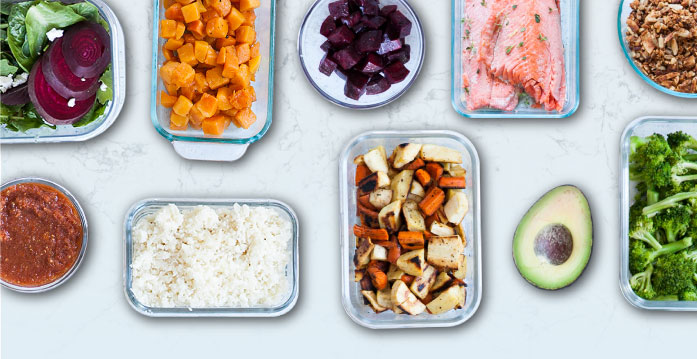You may have big dreams for the sweet bundle of dill in your shopping bag. But before you know it, the wilt sets in and leaves turn yellow. Or how about when you store fresh basil in the fridge, only to see it turn black and droopy a couple days later.
Oh, the heartbreak.
Let’s face it, throwing away a wilted bunch of unused herbs feels sad. But managing to prolong the life of your herbs and store them so that they still give a bright punch of flavor months later? That feels pretty awesome.
If you’re looking for small victories in the kitchen and a way to store fresh basil and other herbs so that they’re always delicious, read on. Bonus: your meal prep will gain a little muscle too.
Five ways to store fresh herbs
Give them something to drink – Leafy herbs like basil, cilantro, and parsley all farewell and stay fresh when stored in a cup of water. Like flowers in a vase, your aromatic greens need something to drink. Keep them watered, and they’ll stay perky for about a week.
To store fresh basil and keep it happy, place basil in a cup of water on the countertop at room temperature with a plastic bag over the top. Cilantro and parsley are a bit more forgiving and can be stored in water (sans bag) inside the refrigerator.
Roll them – This technique allows you to chop off a frozen segment of fresh herbs from a “log.” Before you freeze your leafy greens into a log shape, be sure to wash and dry them well. Excess water will create a solid block of herbs frozen in ice – which is not what you’re going for.
Place your herbs in a plastic freezer bag and push them to the bottom. Once they’re at the bottom of your bag, begin rolling the bag – compressing herbs and pushing out air as you go. After the bag has been rolled around the fresh herbs, seal it and place a rubber band around the bag to hold it in place. Then freeze.
You can roll most leafy herbs into a log for freezing. This includes cilantro, dill, and parsley. This technique does not work for basil, which will blacken once you freeze the leaves.
For the full herbal log tutorial, click here.
Freeze them in oil – You can freeze any herb in oil or butter and have a wonderful result. Using oil as a matrix is especially ideal for basil, as it will best preserve its color, texture, and flavor.
Cubes of frozen pesto are a perfect example of how well herbs fare when frozen in oil. Herbs frozen with water – rather than oil – into ice cubes tend to have less flavor, as it takes longer for the ice cube to melt and become part of your dish.
In order to freeze any herb in oil, simply place chopped herbs in an ice cube tray. A small silicone mold works well. Cover with a high quality oil that you love, like unrefined organic olive oil. Once they’re frozen solid, transfer the cubes to a freezer-friendly bag for long term storage.
Lay them flat – Like the method above, use oil. The benefit of a flat sheet over cubes is that you can cut off as much as you need with kitchen shears.
Begin by placing whole leaves in a food processor with a few tablespoons of high quality oil. Process until finely chopped. Place your herb and oil mixture in a freezer bag and use a straw to carefully suck out excess air before sealing it completely. Evenly flatten the bag on baking sheet seal and freeze.
Pack them in jars – This method works best for chives. You can quickly chop chives and then freeze whole in an airtight freezer-friendly jar, like these weck jars.
What happens when you freeze fresh herbs
All methods except the first involve your freezer. Note: no matter how you freeze herbs, water expands. This will inevitably damage the cell wall of plants, changing their texture.
Reserve freezing for applications that involve cooking, like a sauce. Or some sort of pulverizing, like pesto. This will mask the change in texture that happens after a freeze.
Frozen herbs keep for up to six months in the freezer.


